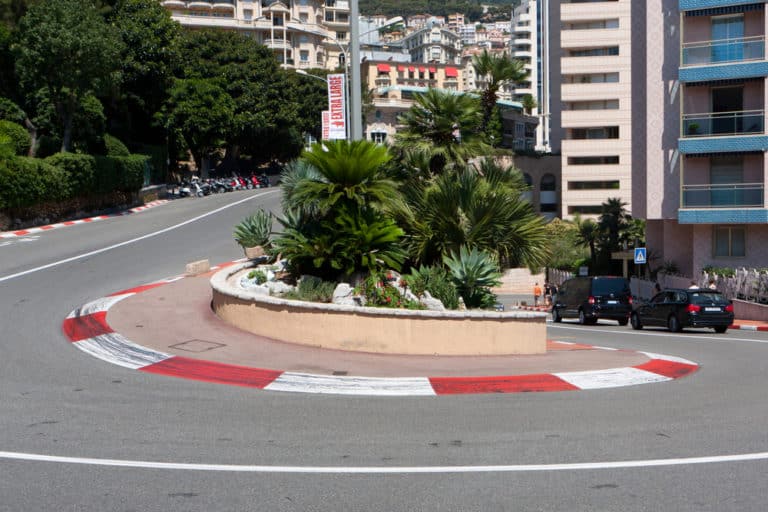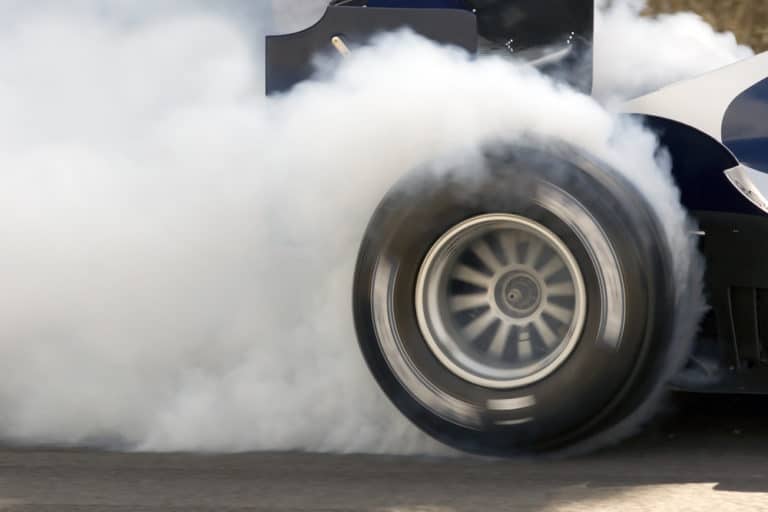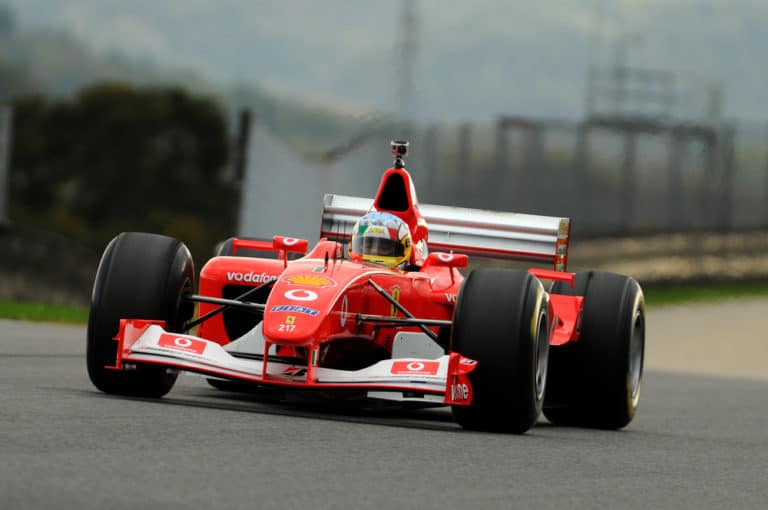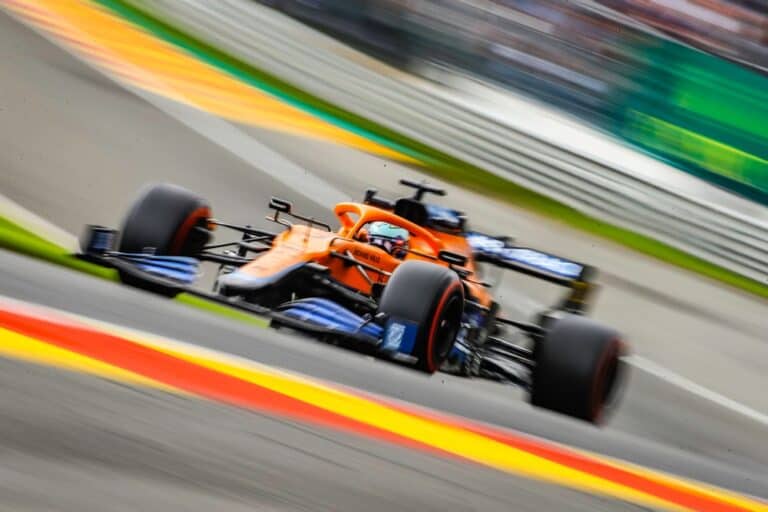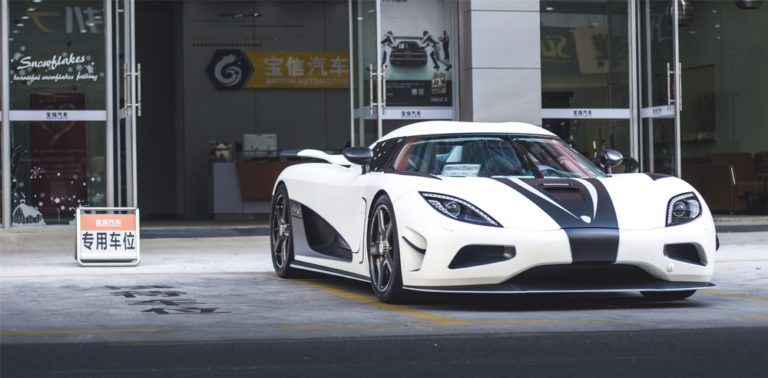To some, it may seem like a silly question, but to casual viewers of F1, things look a bit strange when you see how low an F1 driver sits in his car. Many questions do arise, and today we want to look at how F1 drivers see the road. So, let us get into it.
Even though drivers sit low in their cars, they can always see above the steering wheel. So, it is the same as how we look over our cars’ dashboard and steering wheel. In terms of the halo, it does not obstruct the vision of F1 drivers. In terms of visibility, the halo is not something to worry about. The part they look past is extremely thin.
I get a lot of inherently similar questions. In today’s article, I want to take almost every question I get asked about how F1 drivers see while racing and answer them in one go. So, for everything you need to know about how F1 drivers see the road, keep reading.
Why do F1 Drivers Sit so Low?
We need to think about how low Formula 1 cars are. Millions of dollars get spent in the research and development of better aerodynamics every year for every vehicle. It would be useless to work on these aerodynamics if your driver obstructed the aerodynamics by sitting too tall.
So to maximize the aerodynamics of the car, the driver will sit as low as possible while still being able to see in front of them. Sitting low also helps improve the car’s handling. Hear me out. You want your driver to sit as close to the center of gravity as humanly possible. Doing this improves performance and handling.
What do F1 Drivers Look at In the Car?
The driver will look at the track ahead. They will be highly focused and engaged with their car. An F1 driver will plan everything he will do ahead of time. You will also have quick reactions to adapt to situations when needed.
An F1 driver will also look at the steering wheel of his car. He has everything at his disposal on the steering wheel that he needs to maintain the integrity of his tires, brakes, engine, and much more.
The driver also spends some time looking around his car and in the rearview mirrors. He needs to know what is in front of him, around him, and behind him as an F1 driver. Spatial awareness is a vital racing driver skill.
How do Formula1 Drivers See Behind Them?
How drives see behind them might seem simple at first; surely they just look in their rearview mirrors, right? Well, yes, technically, a driver can look in his rearview mirror. However, they hardly do so when not in danger of being overtaken, and they hardly ever need to know what’s behind them.
Formula 1 drivers are in constant contact with their pit crew via radio. Once the race enters its fourth or fifth lap, the track becomes less congested, and a driver does not necessarily need to keep checking what’s going on behind him.
So, his pit crew will often tell him how far a car is behind him, who it is, and a few other statistics like whether or not they are faster than them and what the gap between the two drivers is. However, when another car is trying to overtake the driver, they will use their rearview mirrors to position their vehicle to avoid overtaking. This is done strategically, and it separates the best drivers from everyone else.
Do F1 Helmets Limit a Drivers Peripheral Vision?
This is another question that we get asked a lot, and it has everything to do with how F1 drivers see. When you think of a motorbike helmet, often, your peripheral vision indeed becomes limited when wearing one. However, when you are on a motorbike or in a car, you can still see what’s happening around you.
Because F1 drivers don’t have the privilege of turning their heads very far, they rely heavily on their peripheral vision. Therefore, the visor for an F1 helmet is longer than an average motorcycle helmet. This means that a Formula 1 driver still has full use of their peripheral vision.
I would just like to add that the peripheral vision of an F1 driver is usually exceptional. Remember, they train every day on the small things such as visualizing the track, their awareness, and coordination skills. All of this contributes to their peripheral vision.
What is The Red Light on The Back of an F1 Car?
The red light on the back of an F1 car is a crucial piece of safety equipment. You will notice that all F1 cars have them. You will also see that cars often have them on; why is this? Let’s find out.
The red light is used whenever the visibility of the race is limited to any extent. So, if it is raining, the light will be used throughout the race. If it is a night race, the light will again be used. Even if there is a slight dip in visibility, drivers will use the light.
It is for the safety of every driver. For example, if Hamilton is in front, the last thing he wants is for someone to crash into the back of him. So, while his light provides safety to whoever is behind him, it also makes him safer.
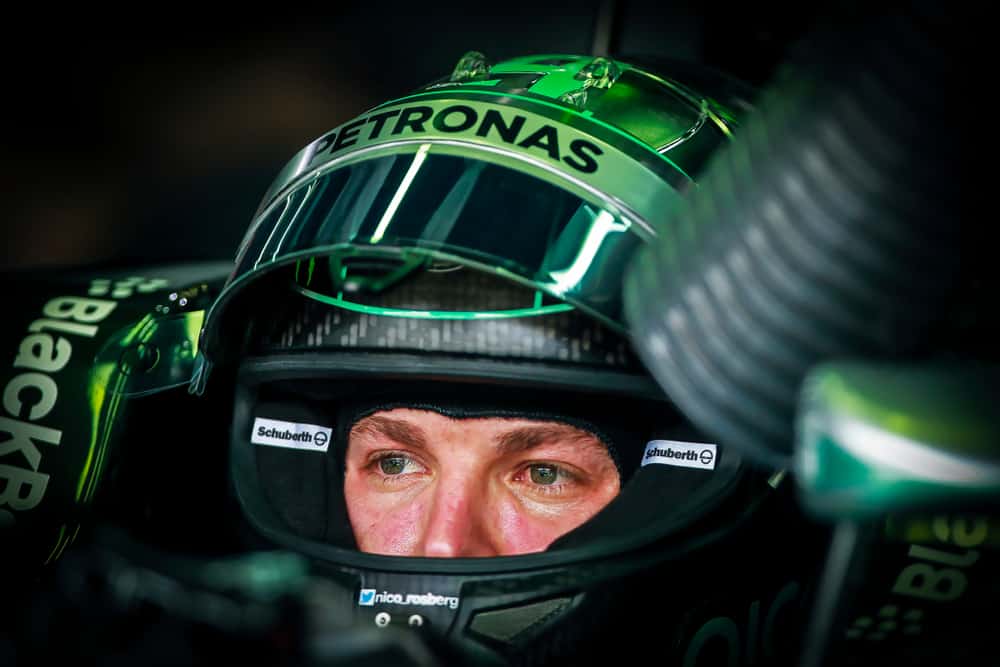
Do Short F1 Drivers Struggle To See The Road?
You get a few sports where your height and overall size can determine how successful you are in that sport, and many people might think the same for Formula1. However, people of shorter stature have nothing to worry about when it comes to their hopes and dreams of becoming a Formula1 driver.
You can still race in F1 if you are short. You will have no problem seeing the road in the same way taller drivers do.
You do get a few tall drivers. Currently, the tallest drivers are Esteban Ocon and Alex Albon, who are both 1.86m tall. However, for the most part, Formula1 drivers are not tall. In fact, we are going to give you a list of some of the shortest drivers in F1 today. Knowing that Lando Norris is a fan favorite, some people still get shocked when they find out just how short he is.
Here is a list of some of the shortest drivers in F1 today. They might be short, but they are some of the best racers in Formula1.
- Yuki Tsunoda: 1.59m
- Lando Norris: 1.70m
- Fernando Alonso: 1.71m
- Lewis Hamilton: 1.74m
Does F1 Have a Height Limit?
You would think that there is a height limit in F1. After all, the driver should see everything behind them and in front of them, right? Well, it does not matter how tall you are. A driver will always be able to see over the steering wheel for one reason.
A Formula1 team will know who the driver for the next season is. They will not necessarily build a car to their specifics, but there are certain parts that they will pay extra attention to. 1st, they will position the driver’s seat to see over the steering wheel.
They also mold the seat to the specifications of the drivers. They literally develop the seats according to the buttocks of their driver. That is why even though two drivers race for the same team, they have their own car.
Can F1 Drivers See The Crowd?
Formula 1 drivers can usually see what is ahead of them, and if a crowd is in front of them, especially when approaching a corner, then a driver will see the crowd. However, once past the corner exit and out of the driver’s peripheral vision, he will have to wait for an entire lap until he sees that specific crowd again.
However, there is a difference between asking whether or not an F1 driver can see a crowd and whether or not they see that crowd. Here’s why: For the duration of the race, a driver will be focused on what is ahead of them. They will be so in tune with their car and the road that the chances of them looking at the crowd are very slim.
Formula1 is a sport of milliseconds, and if a driver loses concentration for even one millisecond, it can cost them the race. In a sport as dangerous as F1, it can be hazardous to them and other drivers on the track if any driver loses focus.
So, I don’t think drivers pay much attention to the crowd during a race. However, some drivers state that even with their engines running, they can hear the crowd cheering for them when it comes to the end of the race. This is where they pay attention as they wave to the public to thank them for their support.
Can F1 Drivers See what’s around the corner?
As we have mentioned, F1 drivers are in constant contact with their pit crew via radio. Their pit crew will have various monitors that tell them different stories. One of those is what is in front of their driver. It would help if you also considered that an F1 driver knows every part of the track like it is the back of their hand.
They know everything about every corner on every F1 race track. Some say that they could race it with their eyes closed, although I don’t like to believe In sensational stories. That said, the driver can’t magically see what is in front or around the corner.
What they do have is their pit crew telling them what is around the corner. If there is an obstruction or another car, they will hear about it via radio.
Does The Halo on F1 Cars Obstruct Vision?
The FIA introduced the halo in 2018. It is a safety device that has already proven its worth. However, the halo does look like it could obstruct a driver’s view because it goes right through the center of where drivers look.
While the halo is certainly visible to the driver, it does not obstruct the driver’s view. The driver can look straight past the halo as the part that the driver looks at is extremely thin. Also, because the halo has been around for a while now, drivers have become used to it.
The amount of focus that a driver has during a race means that it is hard for anything to obstruct their view or distract them. Once a driver gets into the car, the halo almost becomes part of their Vision by the time they warm up, and it is unnoticeable.
However, here is a video of what it looks like in a driver’s eyes when they are on track. The video is of Pierre Gasly in 2018 at the Monaco Grand Prix.
F1 Driver’s Eye View with Pierre Gasly | 2018 Monaco Grand Prix
Do F1 Helmets Ever Fog up?
This is another section where we can use a motorcycle helmet as a comparison; however, F1 helmets are different from motorcycle helmets. In my helmet, I have to use a spray that prevents the helmet from fogging up. I also have a thick plastic insert covering my nose so that the air I breathe out does not fog up inside the visor.
An F1 helmet has a skinny but expensive inner layer of the visor that prevents fogging. It is a great solution, but it is an expensive one.
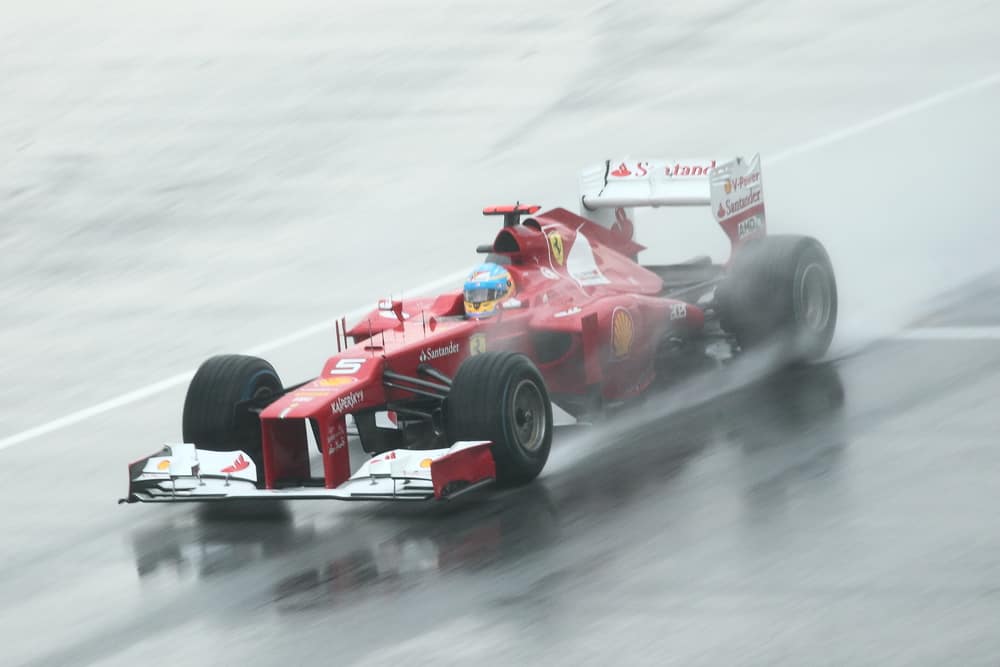
How Do F1 Drivers See in The Rain?
The visor on an F1 helmet is waterproof, so the minute any rain hits the visor, it immediately falls off. So a driver can see perfectly normal when it is medium rainfall. However, when the rain starts to get heavy, their visibility does become limited.
Each F1 car has a flashing red light at the back, and so if it is raining, the driver will always be able to see that red light even though they might struggle to see the track.
An F1 driver will still know where they are going on the track because they have memorized it so well. You need to combine all of these factors to understand why a driver can race in the rain.
- They have a waterproof visor.
- The tracks are well-lit.
- Each car has a flashing red light at the back.
When it is raining, an F1 driver’s biggest concern is handling the car and not necessarily about their vision. Driving in the Rain can be highly technical, and every driver does undergo training on wet tracks.
Can You Drive in F1 if You Wear Glasses?
The FIA does not have any rules against someone who needs to wear glasses driving an F1. There have been a few drivers in the past who have raced even though they wear prescription glasses. However, everything is not so simple.
We need to think of the implications of wearing glasses underneath your helmet. An F1 driver does not have time to adjust those glasses as it would undoubtedly end in a crash. Instead, if their glasses were to become uncomfortable, they would need to wait until they can pit to sort that out. Even that would extend the pit time, which is unacceptable, especially in modern Formula 1.
So, the simplest solution would be to wear contact lenses that aren’t going to slide out during your race. You would first need to find a team that is happy to let you race for them.
I need to take this opportunity to squash a misconception. People have seen Lewis Hamilton wearing what looks like prescription glasses. However, they are just a style accessory and not prescription glasses.
Why Does the Pit Crew Tell F1 Drivers Who Is In front of them?
I feel that this is related to the initial question of the article. If a driver can see what is in front of them, why do they need a pit crew telling them who is in front? Sometimes, a driver can see a car in front of them, but it does not mean that they know who that is.
Having a pit crew give specific details on who the person in front of them is, their speed, and what they need to do to catch up is highly critical in the strategies that drivers will employ to overtake the person in front of them.
For example, if Carlos Sainz was told that the driver in front of him is Fernando Alonso, then Carlos knows that Alonso is highly skilled at blocking drivers off. Therefore, he knows what he needs to do to overtake him.
If a driver were to find out that the driver in front of him is not so experienced, then before performing an overtake maneuver, a driver would consider the implications of an inexperienced driver and what they could do in retaliation.
Do F1 Drivers Memorize The Track?
Whether or not an F1 driver memorizes a track before each race is up for debate. However, most racers spend a lot of time in simulations, becoming familiar with every aspect of every track.
Some racers are experienced enough to know the tracks without going into a simulation. This is achieved by sheer experience and number of years in the sport.
Final thoughts
Answering questions like these is what we love to do here at one-stop racing. Hopefully, the next time you watch F1, you won’t bug yourself with questions such as how F1 drivers see the road because you should know precisely what they are doing.

